Darlingtonia californica, commonly known as the Cobra Pitcher Plant, is a visually stunning and captivating plant. Its unique physical characteristics make it stand out among other plants in any collection.
Appearance of Darlingtonia californica
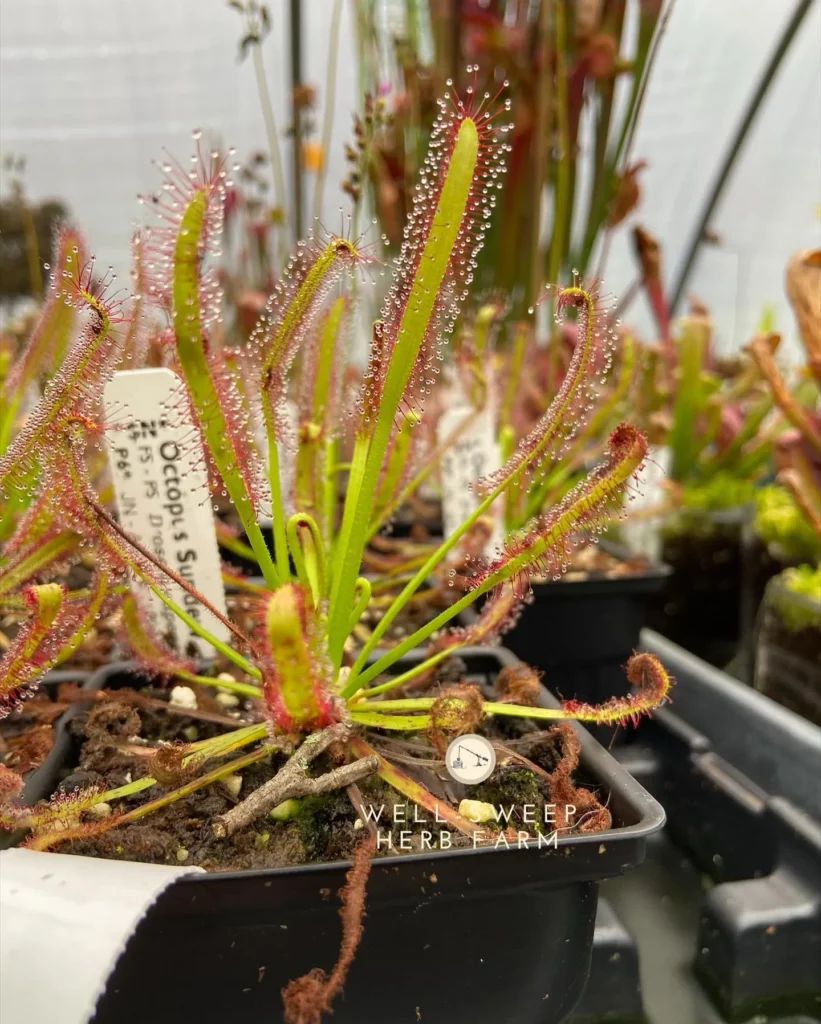
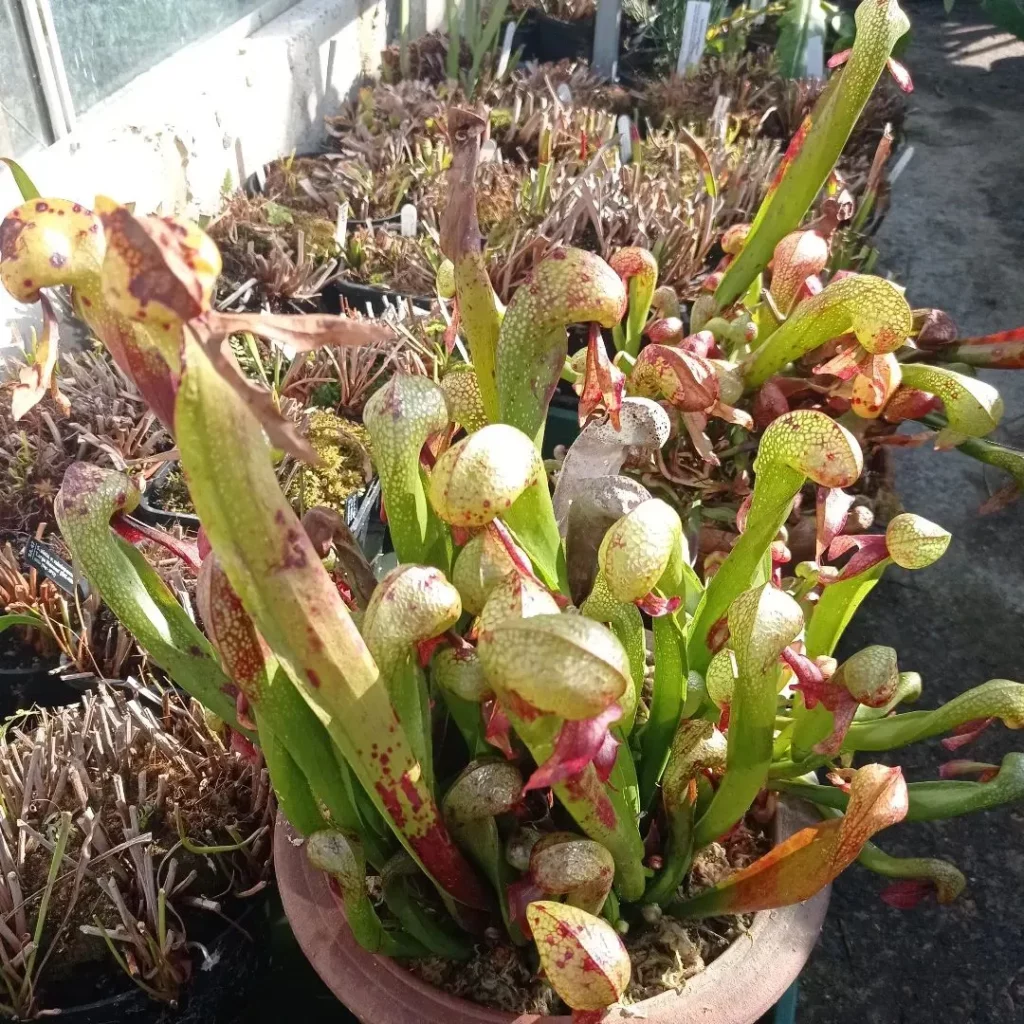

The standout feature of Darlingtonia californica is its cobra-like pitcher-shaped leaves. These pitchers can grow up to 3 feet tall and have heads the size of fists, making them an impressive display. The pitchers have an intricate structure, with a hollow tube-like shape that serves as a trap for unsuspecting insects. The translucent hood of the pitchers is usually green, but it can exhibit reddish tones depending on the amount of sunlight the plant receives.
Distinctive Features
The appearance of Darlingtonia californica is truly one-of-a-kind. Its cobra-like pitchers and vibrant colors make it an eye-catching addition to any garden or indoor space.
Light Requirements for Darlingtonia californica


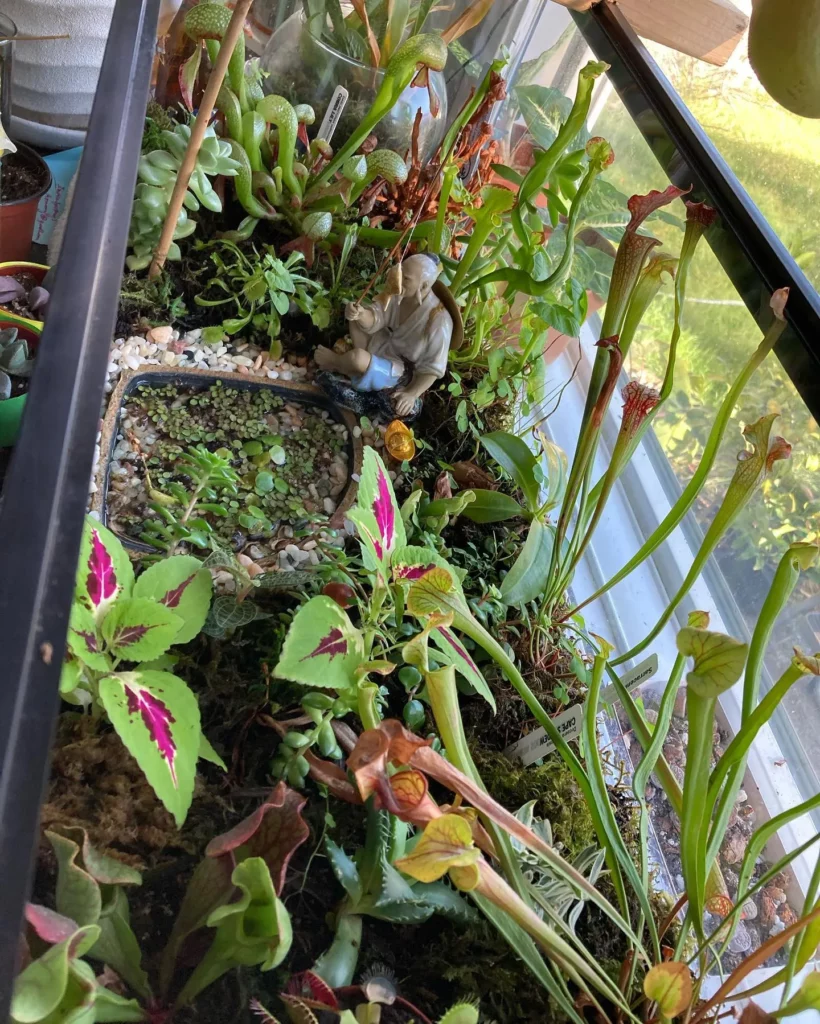
The Darlingtonia californica, also known as the Cobra Pitcher Plant, has specific light requirements that are crucial for its growth and well-being. To ensure the health and vitality of your Darlingtonia californica, it is important to understand its light needs and provide the appropriate sun exposure.
Sun exposure for Darlingtonia californica
Darlingtonia californica thrives in bright, indirect sunlight. It needs a minimum of four hours of direct sunlight per day during the growing season. However, it is essential to strike a balance between providing sufficient sunlight and protecting the plant from excessive heat.
To prevent overheating, it is recommended to provide morning sun or filtered all-day sun. This helps maintain the ideal temperature for the plant’s growth and prevents it from becoming stretched and weak.
If you grow your Darlingtonia californica in too much shade, it may not receive enough light for photosynthesis and overall development. Therefore, it is important to find the right balance of sunlight to ensure optimal growth.
Watering Darlingtonia californica
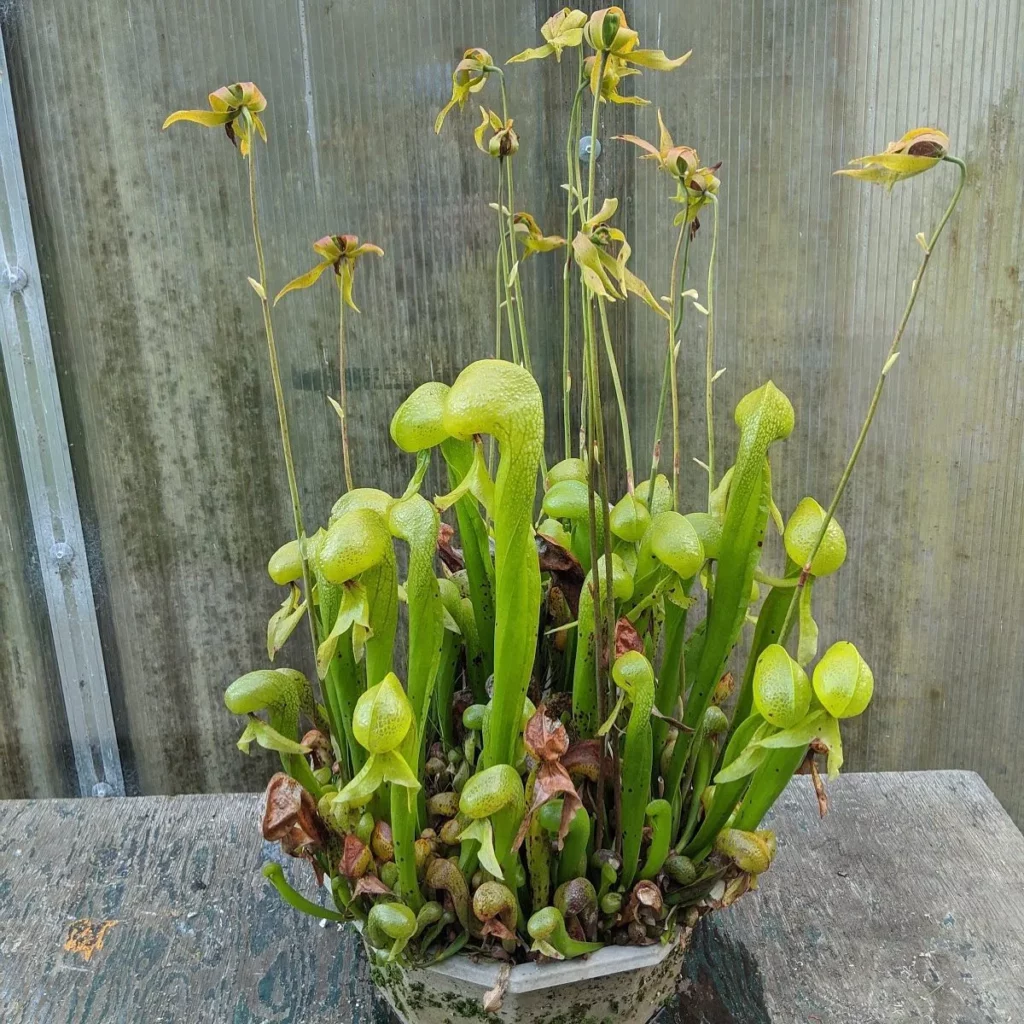
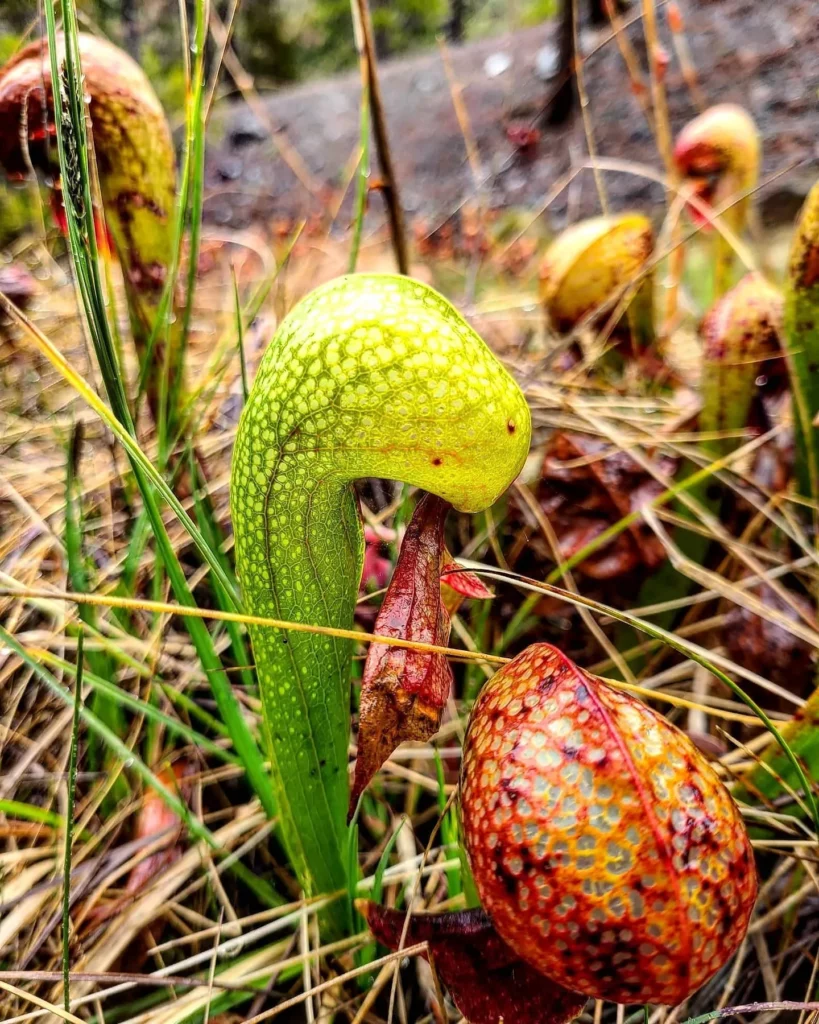
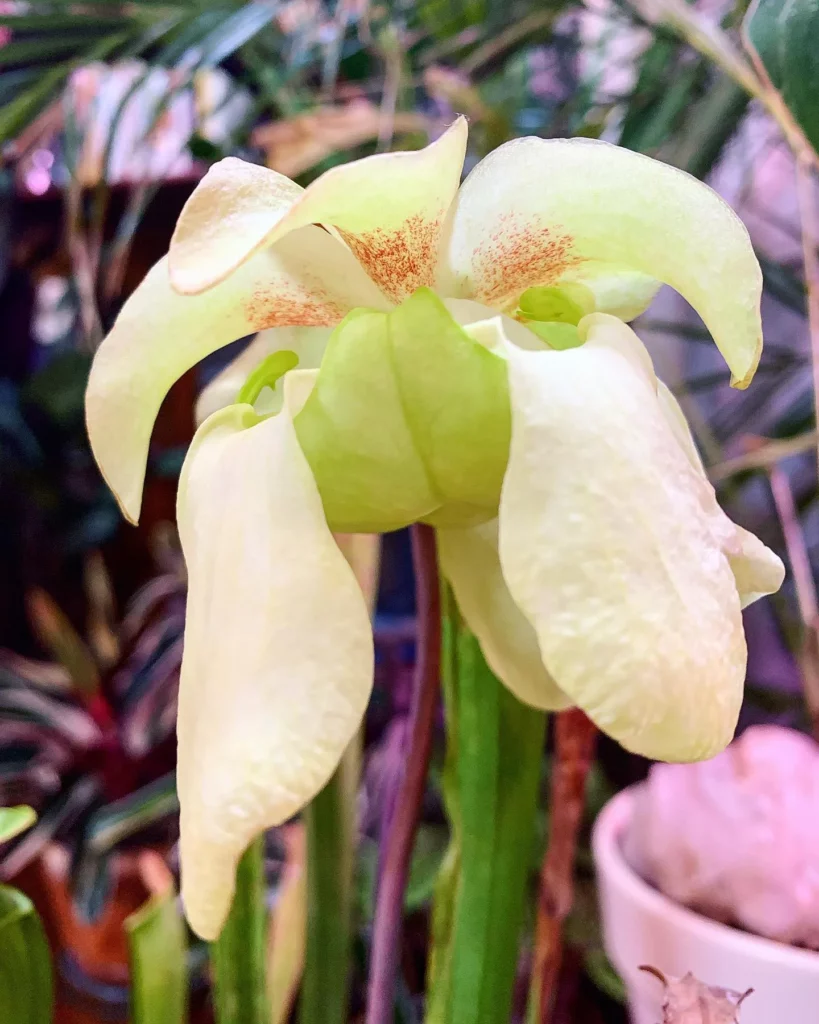
Darlingtonia californica, also known as the Cobra Pitcher Plant, thrives when provided with constant moisture. To meet its water requirements, it is recommended to use the tray method. Keep the plant in a tray with damp to wet soil year-round, mimicking the slow flow of water it receives in its natural habitat.
To maintain cool soil temperatures, especially on warm summer days, it is best to water the plant with cold water. Refrigerated water can help keep the soil cooler and provide additional benefits to the plant. Watering should be done daily to ensure a constant supply of moisture, as this is essential for the plant’s overall health and well-being.
Fertilizing Darlingtonia californica
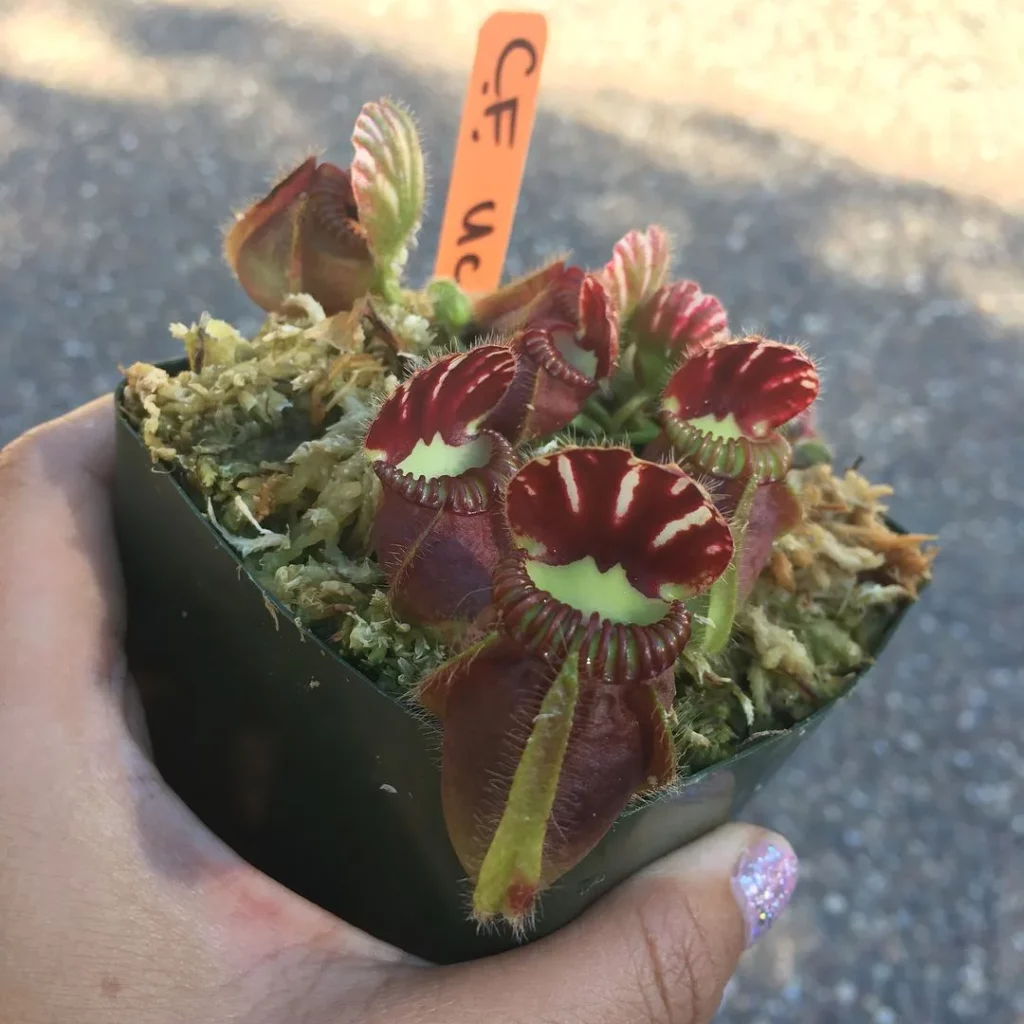
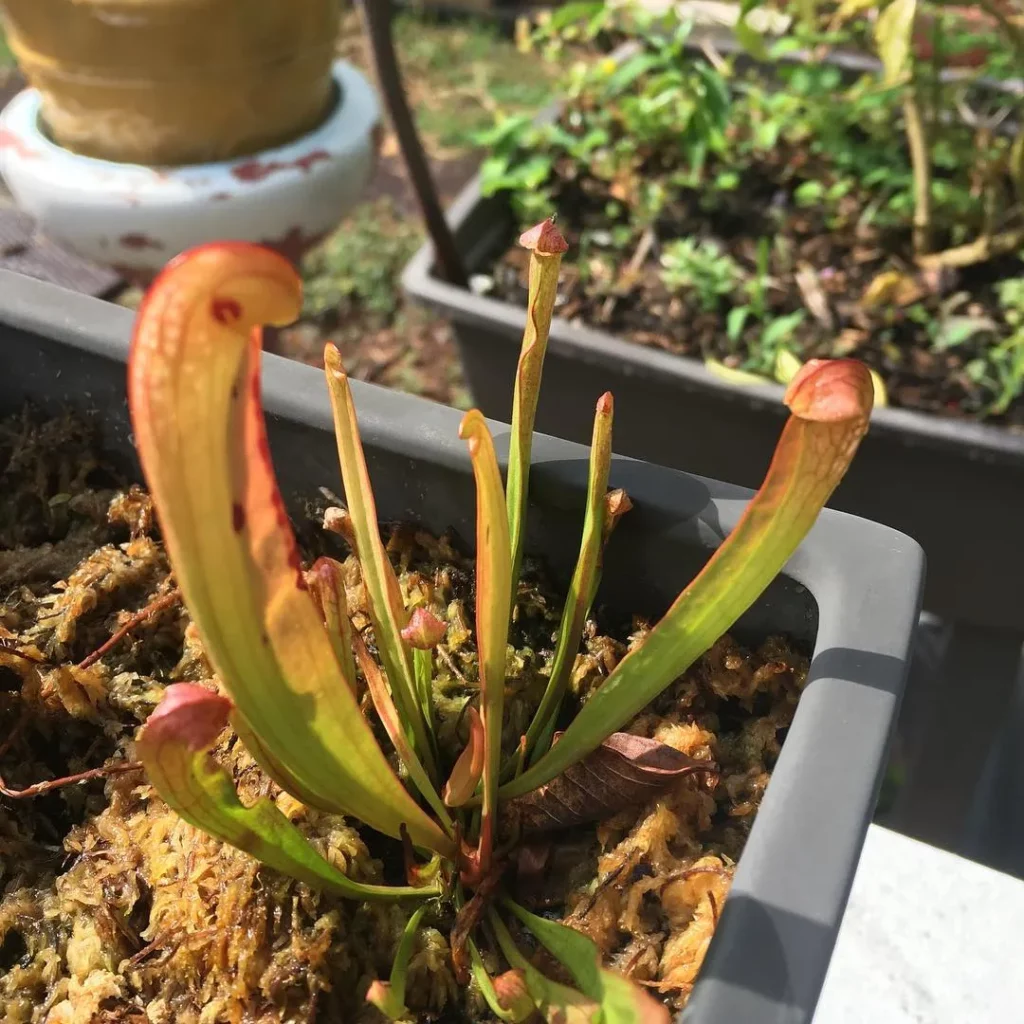

In its natural habitat, Darlingtonia californica catches and feeds on its own food, primarily insects. However, if grown outdoors, it can benefit from monthly applications of MaxSea fertilizer. This should be applied directly to the leaves and pitchers of the plant, avoiding pouring it through the soil. It is important to avoid overfeeding the plant, as excess nutrients can harm the delicate balance of its carnivorous nature.
Potting Darlingtonia californica

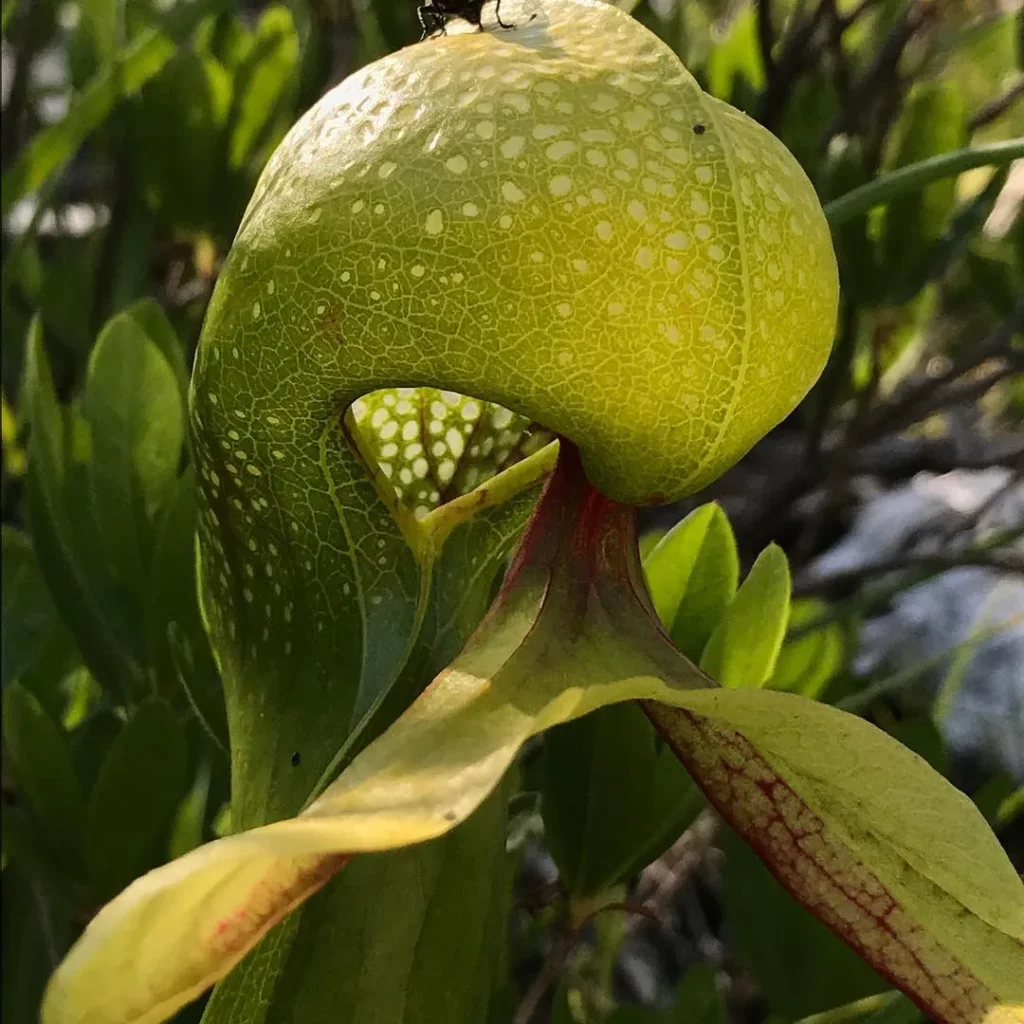
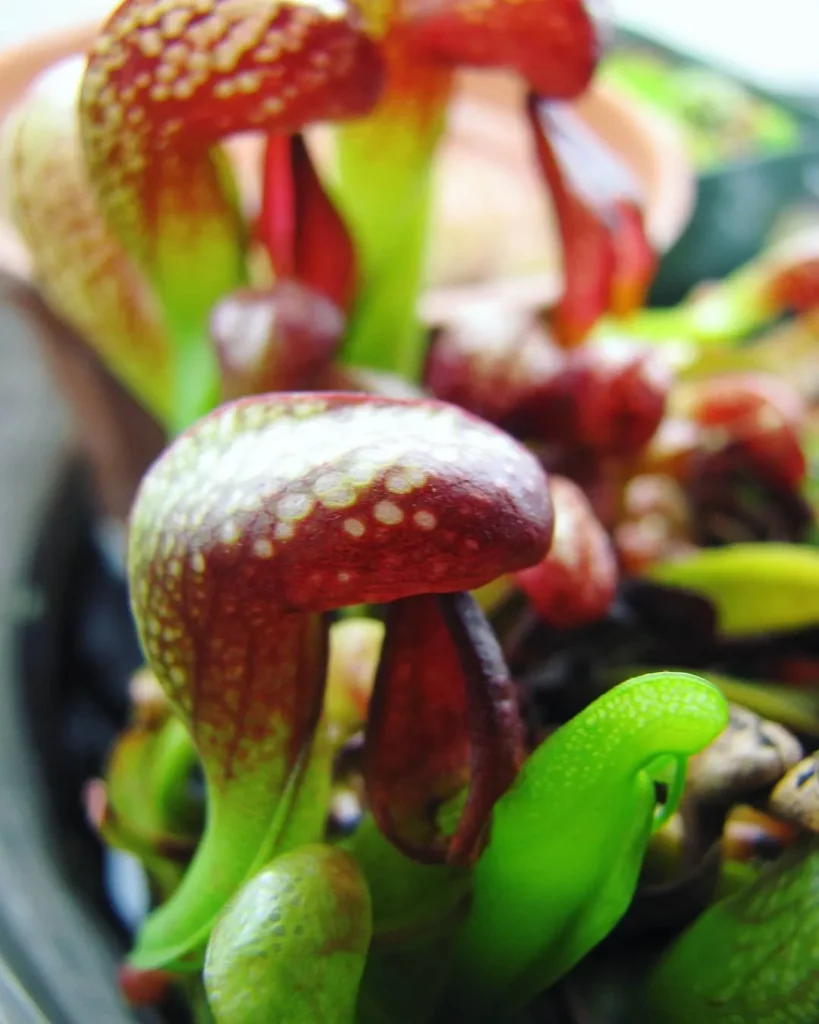
When it comes to potting Darlingtonia californica, it is best to grow this unique plant as a container plant rather than planting it in the ground. To provide the best growing conditions for your Darlingtonia californica, you’ll need to choose the right pot and potting mix.
The ideal pot for Darlingtonia californica is short and wide, allowing for enough depth for the plant’s short roots and enough width for it to spread. Plastic cat litter pans or wide plastic garden bowls can be suitable options for potting this fascinating carnivorous plant.
When it comes to the potting mix, it is important to use an airy and well-draining blend. A mix of sphagnum moss, pumice, and lava rock can provide the right balance of moisture retention and drainage for the plant’s needs. This type of potting mix mimics the plant’s natural habitat and allows for healthy root development.
If your Darlingtonia californica has outgrown its current pot or needs repotting, it is recommended to do so in the spring, before the active growth period begins. Repotting during this time will minimize stress on the plant and help promote healthy growth.
Propagation of Darlingtonia californica
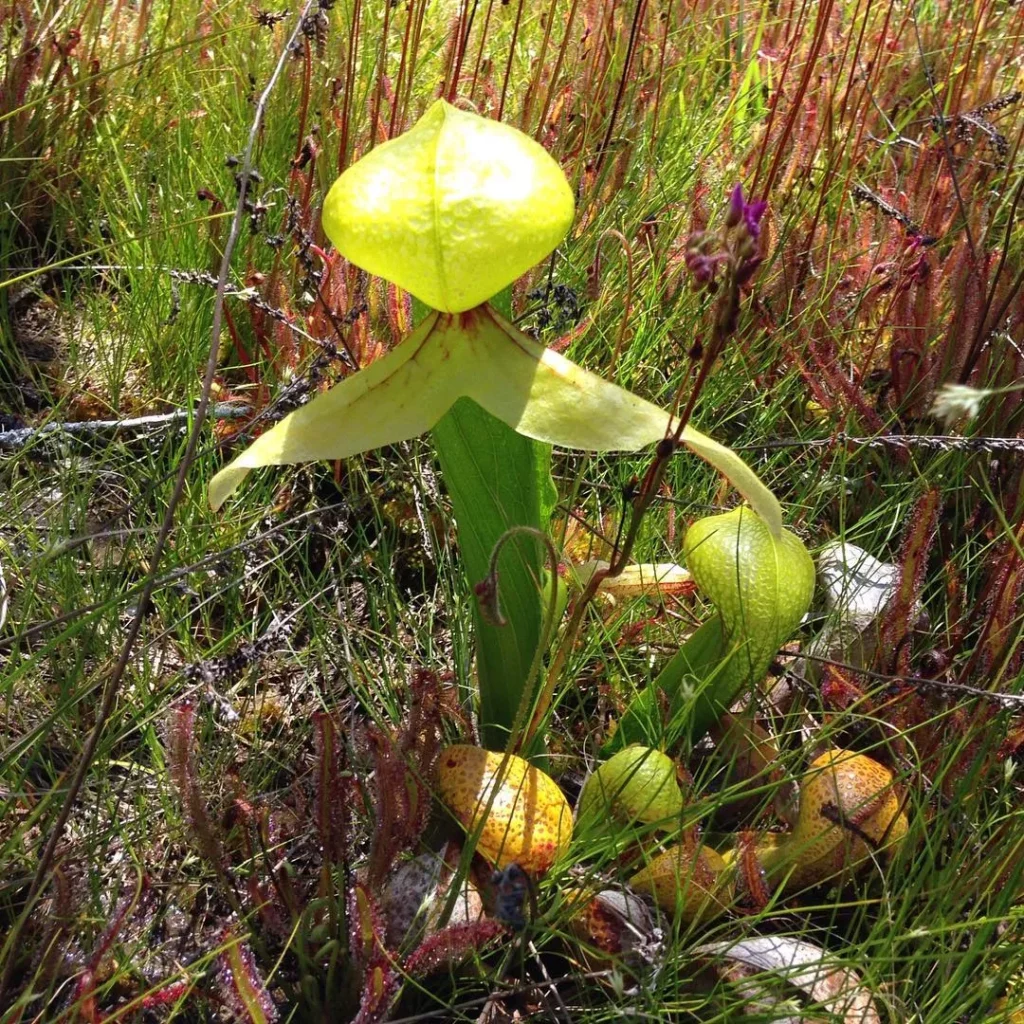
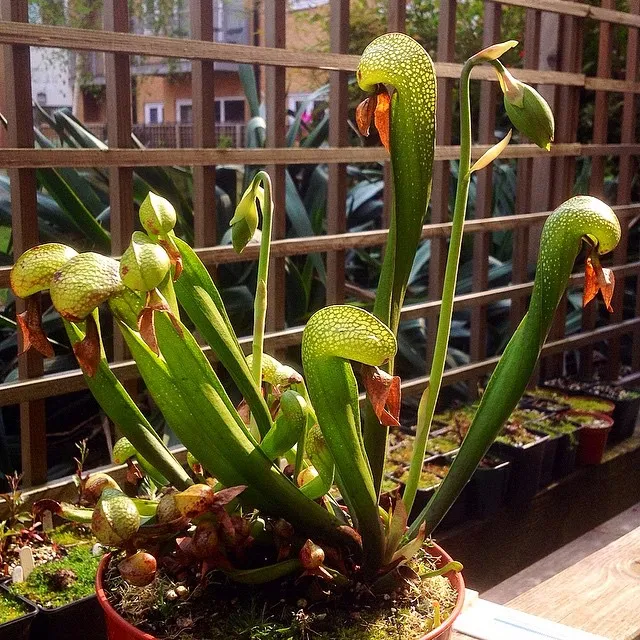
Propagating Darlingtonia californica offers the opportunity to multiply your plants and expand your collection. There are several methods you can use to propagate this unique carnivorous plant.
Root Cuttings
One method of propagation is through root cuttings. To do this, carefully remove a healthy section of the plant’s root system. The cutting can then be placed vertically in wet peat or a suitable growing medium. Keep the cutting consistently moist and provide a warm, bright environment to encourage root development.
Plantlets
Darlingtonia californica also produces plantlets, which are small offshoots that can be removed from the parent plant and grown independently. Locate plantlets that have formed along the underground stolons. Gently separate these plantlets from the parent plant, taking care not to damage the developing roots. Plant the separated plantlets directly into appropriate growing conditions, ensuring they receive adequate moisture and light.
Seeds
Seeds can also be used to propagate Darlingtonia californica. However, this method requires specific conditions for successful germination. Light, dampness, and cold stratification are key factors to consider. Sow the seeds on the soil surface and lightly cover them with a thin layer of fine sand or peat moss. Maintain steady moisture levels by misting the seeds regularly. Place the container in a bright location with diffused light and ensure a cool temperature range for several weeks to promote germination.
Growth and Development of Darlingtonia californica
Darlingtonia californica, also known as the Cobra Pitcher Plant, undergoes a winter dormancy period from October to February. During this time, many of the pitchers may turn brown and die back. To ensure the plant’s successful growth and development, it is crucial to provide the right conditions during this dormant phase.
If you live in an area with mild winters, it is best to leave the plant outdoors in full sun, sitting in distilled water. This will mimic its natural habitat and help maintain its vitality. However, if you expect snow or extremely cold temperatures, it is recommended to bring the plant indoors and place it on a sunny windowsill. This will protect it from frost damage and provide the necessary light for its continued health.
The growth and development of Darlingtonia californica can be relatively slow. It is important to be patient as it may take several years for the plant to reach its full size and potential. During this time, continue to provide it with the appropriate care, including proper lighting, watering, and fertilizing. With time and care, you will witness the gradual growth and beauty of this unique carnivorous plant.
Pests and Diseases of Darlingtonia californica
As resilient as Darlingtonia californica may be, it is not invulnerable to pests and diseases. Aphids, spider mites, and slugs are common pests that can cause damage to this unique carnivorous plant. To protect your Darlingtonia californica, it is essential to regularly inspect the plant and take necessary measures to control these pests. Using organic insecticides or manually removing them can effectively manage their populations.
Another challenge for Darlingtonia californica is the occurrence of diseases such as root rot and fungal infections. These diseases can harm the plant, but with proper care, they can be prevented. Ensuring the right soil moisture and promoting good air circulation can help minimize the risk of these diseases. Regular monitoring of your plant’s health and taking prompt action at the first sign of trouble will go a long way in maintaining its well-being.
FAQ
What is the appearance of Darlingtonia californica?
Darlingtonia californica, also known as the Cobra Pitcher Plant, has distinctive cobra-like pitcher-shaped leaves. The pitchers can grow up to 3 feet tall with heads the size of fists. They have a hollow tube-like structure that serves as a trap for insects. The pitchers have a translucent hood and are usually green, but can exhibit reddish tones depending on the amount of sunlight they receive.
What are the light requirements for Darlingtonia californica?
Darlingtonia californica thrives in bright, indirect sunlight. It requires at least four or more hours of direct sunlight per day during the growing season. However, it is best to provide morning sun or filtered all-day sun to prevent overheating. It is important to strike a balance between sufficient sunlight and protection from excessive heat.
How should I water Darlingtonia californica?
Darlingtonia californica requires constant moisture to thrive. The tray method is best for this plant, where it is kept in a tray with damp to wet soil year-round. To maintain cool soil temperatures, it is recommended to water the plant with cold water, such as refrigerated water, especially on warm summer days. Watering should be done daily, mimicking the constant slow flow of water the plant receives in its natural habitat.
How should I fertilize Darlingtonia californica?
In its natural habitat, Darlingtonia californica catches and feeds on insects for food. However, if grown outdoors, monthly applications of MaxSea fertilizer can benefit the plant. It should be applied directly to the leaves and pitchers, avoiding pouring it through the soil. Be careful not to overfeed the plant, as excess nutrients can harm its carnivorous nature.
How should I pot Darlingtonia californica?
Darlingtonia californica is best grown as a container plant. The ideal pot for this plant is short and wide, providing enough depth for the short roots and enough width for the plant to spread. Plastic cat litter pans or wide plastic garden bowls can be suitable pots. The potting mix should be airy and well-draining, such as a mix of sphagnum moss, pumice, and lava rock. Repotting should be done in spring, before active growth begins.
How can I propagate Darlingtonia californica?
Darlingtonia californica can be propagated through root cuttings or by removing small plantlets from underground stolons. Root cuttings can be placed vertically in wet peat, while plantlets can be planted directly in suitable growing conditions. Seeds can also be used for propagation, but they require light, dampness, and cold stratification for optimal germination. Ensure steady conditions and bright diffused light for successful propagation.
How does Darlingtonia californica grow and develop?
Darlingtonia californica has a relatively slow growth and development. It undergoes a winter dormancy period from October to February, during which many of the pitchers may turn brown and die back. To support its growth, leave the plant outdoors in full sun, sitting in distilled water or indoors on a sunny windowsill if snow is expected. It may take several years for the plant to reach its full size and potential.
What pests and diseases can affect Darlingtonia californica?
Darlingtonia californica can be susceptible to pests such as aphids, spider mites, and slugs. Regular inspection and control measures, such as organic insecticides or manual removal, can help manage these pests. Common diseases include root rot and fungal infections, which can be prevented by ensuring proper soil moisture and good air circulation. Regular monitoring and prompt action can help maintain the plant’s health.




